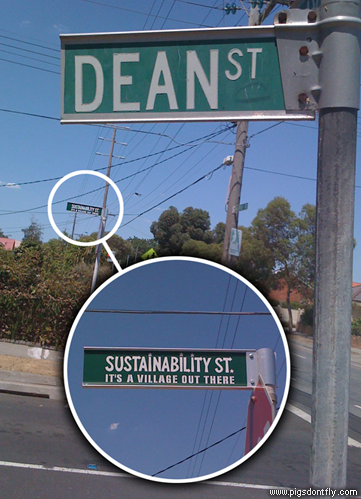09 February 2009 The Rules Of Social Media


It only occurred to me this morning, but could this be a cunning marketing campaign for VB?
While I doubt that’s the case, wouldn’t it be incredible if it were so? I love the creativity. I love the brand tie in. I love the audience engagement. I even love that it’s completely non transparent, and Julian agrees sometimes it’s appropriate to break the so called “social media rules”.
It could also be some guy who just wants a creative outlet. It might even be Stan himself. But maybe, just maybe, it’s a genius piece of work by Droga5.
It started early last year when Oyster first sent feedback to the Marketing Today podcast. He followed that up with further comments over the next few months, adding value to the conversation each time. In October, he started his own blog.
He was soon commenting on a number of different blogs, adding insight and thought to each post. Building up his online presence, he established networks and from that his own posts started receiving a lot of attention.
He contacted me personally and we had a number of emails back and forth about beer and funny internet memes. He still sends me random shit he thinks I’ll like. And he offered to host some images on a server he had access to.
In less than six months, he’s been able to do what I’ve been trying to for nearly two years. In just this short a time, he’s blog is held in incredibly high regard. I believe that while his content is remarkable, his community driven approach and the rules of engagement he followed have attributed to his success.
I think if you asked Oyster whether this was a strategy he set out to do or if this was just what he thought was common sense, logical and how a decent friendly guy would act, his answer would be the latter.
Brands can learn a lot from this.
The way Oyster first monitored the environment, began to put out feelers and ultimately engaged with the right influential people was superb. Brands should use this example when conducting social media response and broadcast.
The thing is, I’ve been around, not heavily involved, with a subset of the 4chan community for a number of years, long before social networking was even big. Over the years I’ve been subjected to many memes, most of which I probably didn’t even realise at the time were memes. I’ve seen the birth of some of these Internet phenomenons and possibly taken part in developing them into mainstream memes. It wasn’t until Julian’s post that I started thinking about the importance of this community on Internet culture, even more so about a possible marketing application.
Julian said there was too much to cover in one post, and I agree. So here I’m simply going to suggest you check out the two biggest slums on the Internet…
Both communities are incredibly strong, even if they are based entirely around the anonymous. After spending a fair bit of time in these slums over the past month, I can easily say they are the best and worst places on the Internet. They are social in a disgusting yet brilliant manner. And they are responsible for 90% of the memes on the Internet and have had an impact on culture many couldn’t comprehend.
So as marketers, how can we use these communities?
0-19 __iGeneration
20-39 _Generation X and Generation Y
40-59 _Baby Boomers
60-79 _Lucky
80+ __.Oldest
The newer generation characterisation relies not so heavily on random age demographics, but rather characteristics of each segment. iGeneration, most specifically, focuses on interweb usage and have been named aptly so because they have no memory without it.
Two things to note…
+ The next generation now has an official name, at least here in Australia.
+ I can no longer call myself a Gen Y, instead I am an iGen. Scary.

Also Mumbles gave me some link love so I feel like I owe him. ;]
Gen Y want everything free, but are happy to pay a small amount for instant gratification. If it’s worth paying for, we’ll pay for it.
Here are some examples…
+ iPhone Applications
While most applications for the iTouch and iPhone are free, some are priced incredibly cheap. Enigmo, a puzzle game priced at just $2.49, has made $1.8 million in sales.+ iTunes Music
Apple’s attempt to overcome piracy hasn’t been 100% successful, but charging $0.99 for a song has certainly helped. Cutting out a number of middle men, both Apple and the artists have earned far more than through traditional sales of singles and albums. Television series and movies are slowly building momentum under the same model.+ Second Life Avatars
While Second Life is now quieter than the audience of an Eddie Murphy movie, at its peak, 15 year old programmers were making enough to put themselves through college selling $0.40 avatars.+ Ricky Gervais Audiobooks
Podcast turned Audiobook, for just $10 you can buy hours and hours of hilarious content that has made the Ricky Gervais trio millions.+ Guitar Hero Downloads
Later versions of Guitar Hero allow you to jump online and download your favourite tracks to play against, in a somewhat similar fashion to the Apple Store. Aerosmith have more from Guitar Hero than from any of their album releases.
Micro transactions, with the ability to cut out any middleman, will be the way we produce, distribute and consume content in the very near future. What other examples are there?
